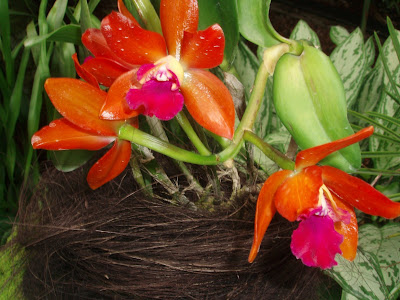








COCHIN, INDIA MARCH 26, 2008
Cochin is a city on the west coast of India south of Bombay. As a result of successive wave of migration over the course of several centuries, the population of the city is a mix of people from all parts of the state of Kerala, India and the world. The pan-Indian nature is highlighted by the substantial presence of various ethnic communities. The city has a diverse, multi\cultural, and secular community consisting of Hindus, Christians, Muslims, Jains, Jews, Sikhs and Buddhists. Surprisingly Christians represent 40% of the population. The population is proud of their harmony and diversity.
We were met at the dock by this wonderfully bedecked elephant.
Our tour took us to St. Francis church that was begun by the Franciscan Friars accompanying the Portuguese in 1507. After the Portuguese navigator Vasco da Gama landed here in 1502 he was later buried in this church in 1524. Get a load of the "airconditioning system" consisting of fans running up and down the church and a rope pulled by somebody outside.
The Paradesi Synagogue here was begun in 1568. The Jewish population is said to date here to 3000 BC when Jews from Jerusalem migrated here to trade in the spices popular in this coast of India. The clock tower of the synagogue is a prominent part of the skyline.
Fishing is a large part of the culture here. The large fishing nets are called Chinese nets because they were brought from China many centuries ago. They are very primitive in their construction with boulders hanging as counterweights. They are however huge things as you can see by the man walking out toward the net to ad weight to lower the net into the water.
Other fishing is by larger brightly painted boats that go out into the ocean for their catch of larger fish. Here are a couple of them coming in and you can see the open hold filled with silver fish.









































